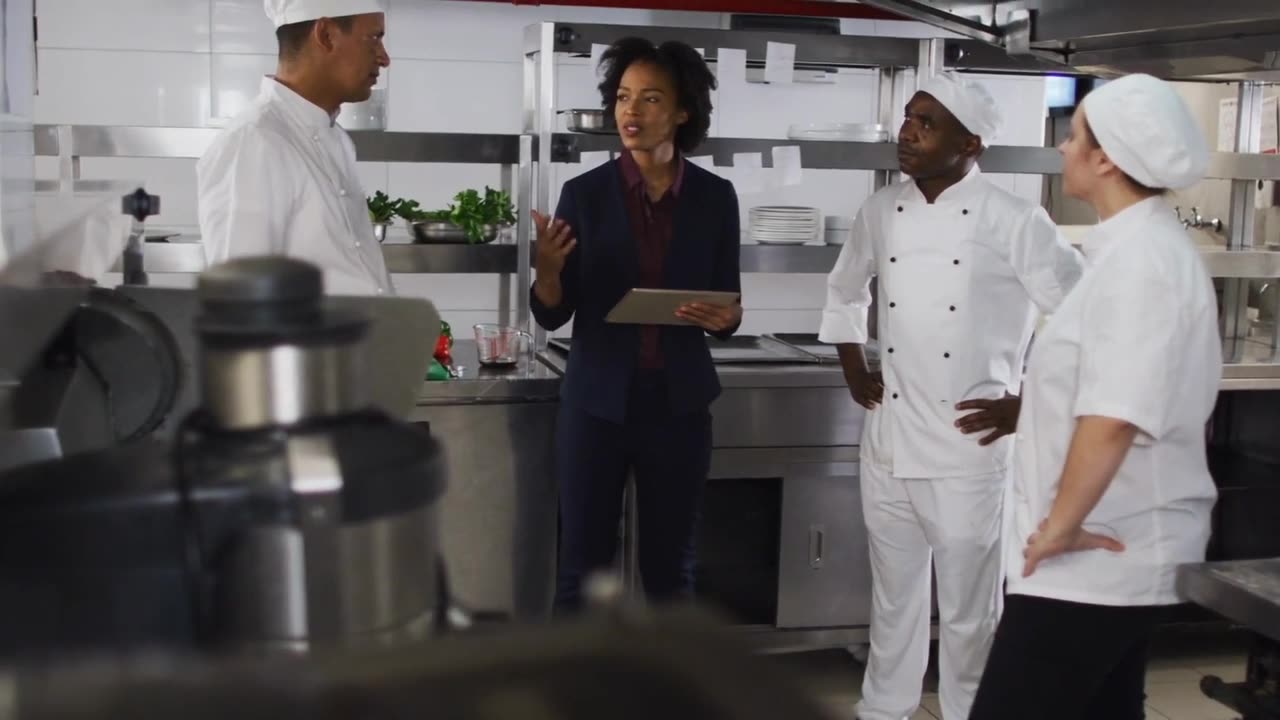Premium Only Content

Food Hygiene Basics - Introduction to Food Hygiene Level 2_2
**Food Hygiene Basics - Introduction to Food Hygiene Level 2**
Food hygiene Level 2 provides essential knowledge and skills for individuals involved in food handling and preparation. It is designed to ensure that all food handlers understand their responsibilities and follow safe practices to prevent contamination and foodborne illnesses. Below is an outline of the key areas covered in a Level 2 Food Hygiene course:
---
### 1. **What is Food Hygiene?**
- **Definition:** Practices to preserve food safety, minimize contamination, and prevent foodborne illnesses.
- **Importance:** Protecting consumer health, ensuring food quality, and meeting legal obligations.
---
### 2. **Food Safety Hazards**
- **Types of Hazards:**
- **Biological:** Bacteria (e.g., Salmonella, Campylobacter), viruses, and fungi.
- **Physical:** Foreign objects such as hair, glass, or plastic.
- **Chemical:** Cleaning agents, pesticides, and food additives.
- **Allergenic:** Foods causing allergic reactions (e.g., nuts, shellfish, gluten).
- **Contamination Prevention:** Proper handling, storage, and cleaning practices.
---
### 3. **Personal Hygiene**
- **Handwashing:** When and how to wash hands properly.
- **Protective Clothing:** Importance of aprons, gloves, and hairnets.
- **Health Policies:** Reporting illnesses, wounds, or symptoms that may affect food safety.
---
### 4. **Cleaning and Disinfection**
- **Cleaning Principles:** Cleaning surfaces, equipment, and utensils to remove visible dirt.
- **Disinfection:** Using appropriate chemicals to kill harmful microorganisms.
- **Cleaning Schedules:** Routine and deep cleaning practices to maintain hygiene.
---
### 5. **Temperature Control**
- **Safe Temperature Ranges:**
- **Cold Storage:** 0°C to 5°C to inhibit bacterial growth.
- **Hot Holding:** Above 63°C to keep food safe for service.
- **Cooking:** Reaching internal temperatures of 75°C or above to kill bacteria.
- **Monitoring:** Using thermometers and recording temperature checks.
---
### 6. **Food Storage and Stock Control**
- **Storage Guidelines:** Keeping raw and cooked foods separate to avoid cross-contamination.
- **FIFO Principle:** First In, First Out for stock rotation.
- **Labeling:** Using clear labels for date marking and allergens.
---
### 7. **Cross-Contamination**
- **Definition:** Transfer of harmful bacteria or substances from one surface to another.
- **Prevention:**
- Separate workspaces for raw and cooked food.
- Proper cleaning of chopping boards and utensils.
- Clear labeling of allergenic ingredients.
---
### 8. **Pest Control**
- **Common Pests:** Rodents, flies, cockroaches, and ants.
- **Preventative Measures:** Sealing entry points, proper waste management, and routine inspections.
---
### 9. **Legal Requirements and Responsibilities**
- **Food Safety Legislation:** Compliance with local and national food safety laws.
- **Record-Keeping:** Maintaining logs for temperature checks, cleaning schedules, and inspections.
- **Accountability:** Roles and responsibilities of food handlers in maintaining hygiene standards.
---
Level 2 Food Hygiene training is vital for all food handlers to ensure that food is safe for consumption and that legal and ethical standards are upheld. It builds a foundation for maintaining high food safety standards in any workplace.
Would you like to focus on a particular section or delve deeper into any specific area?
-
 1:14:54
1:14:54
Steve-O's Wild Ride! Podcast
17 hours ago $19.97 earnedZac Brown Reveals The Secrets To HIs Success - Wild Ride #247
76.2K15 -
 4:16:43
4:16:43
JdaDelete
11 hours ago $12.93 earnedProject Zomboid with the Boys | The Great Boner Jam of 2025
47.4K -
 6:00:08
6:00:08
SpartakusLIVE
11 hours agoYoung Spartan STUD teams with old gamers for ultimate BANTER with a SMATTERING of TOXICITY
35.8K -
 1:50:39
1:50:39
Kim Iversen
12 hours agoShocking Proposal: Elon Musk for Speaker of the House?! | IDF Soldiers Reveal Atrocities—'Everyone Is a Terrorist'
82.2K186 -
 43:27
43:27
barstoolsports
15 hours agoOld Dog Bites Back | Surviving Barstool S4 Ep. 9
137K4 -
 5:13:04
5:13:04
Right Side Broadcasting Network
7 days agoLIVE REPLAY: TPUSA's America Fest Conference: Day One - 12/19/24
188K28 -
 1:06:01
1:06:01
Man in America
1 day agoPfizer Has Been Caught RED HANDED w/ Dr. Chris Flowers
64.7K50 -
 2:24:15
2:24:15
Slightly Offensive
13 hours ago $19.01 earnedAttempted ASSASSINATION of Nick J Fuentes LEAVES 1 DEAD! | Guest: Mel K & Breanna Morello
54K91 -
 1:43:08
1:43:08
Roseanne Barr
13 hours ago $29.38 earned"Ain't Nobody Good" with Jesse Lee Peterson | The Roseanne Barr Podcast #79
86.6K81 -

The StoneZONE with Roger Stone
10 hours agoTrump Should Sue Billionaire Governor JB Pritzker for Calling Him a Rapist | The StoneZONE
54.7K6